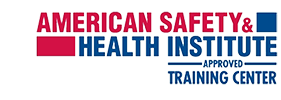As of 2018, 39 states, including North Carolina, passed legislation to now require schools to teach and certify students in CPR before they graduate. However, there are some concerns about these new laws, in addition to a lack of compliance. The University of Louisville School of Medicine surveyed school staff in 32 states that require CPR, and just over three-quarters of survey respondents said they do provide CPR training.
What is Holding Schools Back from Teaching CPR?
 The two main concerns with teaching CPR in school are funding and a lack of certified instructors. Most states don’t add additional funding to schools to help them pay for instructors and supplies, and CPR mannequins can be cost-prohibitive for struggling school districts. Researchers found that while most schools that do provide CPR training have a certified teacher or coach teach the course, 11 percent have instructors who aren’t even certified in CPR, much less certified as an instructor.
The two main concerns with teaching CPR in school are funding and a lack of certified instructors. Most states don’t add additional funding to schools to help them pay for instructors and supplies, and CPR mannequins can be cost-prohibitive for struggling school districts. Researchers found that while most schools that do provide CPR training have a certified teacher or coach teach the course, 11 percent have instructors who aren’t even certified in CPR, much less certified as an instructor.
Why Should Schools Teach CPR?
Schools offer one of the best opportunities for larger-scale training because students from all backgrounds and demographics attend school. More importantly, there are a few statistics that drive home why it’s so important that young people learn the life-saving skills and know what to do in the event of an emergency.
- Over 350,000 people experience cardiac arrest each year.
- Over 85 percent of those heart emergencies take place in the home.
- 70 percent of people don’t know how to respond to a victim in cardiac distress because they don’t know CPR or are afraid they can’t do it correctly.
- CPR can triple the likelihood of survival of cardiac arrest.
- Fewer than one-third of cardiac arrest victims receive CPR and less than 10 percent receive it by a non-emergency worker
When you look at the statistics, it’s clear that increasing the amount of people who can confidently perform essential life-saving skills means there will be an increase in survivors.
Creating CPR Classes and Programs in Schools
For schools that don’t have a CPR program on-site, it’s easier than you may realize to get started. The first step is making sure that either a member of the faculty is a certified instructor or connecting with a CPR training facility who provides on-site classes. Classes can be offered in an after-school program or as part of a health class curriculum.
Securing Funding for CPR Classes
If your school doesn’t have the funding to provide instruction, there are a variety of options that other schools have used to successfully fund this initiative.
- Reach out to local CPR training providers to learn about certifying staff members
- Contact civic organizations, including local Kiwanis and Rotary clubs, area businesses, and other non-profit organizations for donations to purchase CPR training supplies
- Host a fundraiser to raise money for supplies and instruction, such as a choir concert, bake sale, or community rummage sale.
- Contact your state representative about increasing funding for CPR, especially if you are in a state that requires it for high school graduates.
Contact CPR Educators for Information on Classes
We know that the more people there are who can confidently use CPR, the more survivors we will have, and that’s why we are passionate about teaching basic life-saving skills. If you would like to learn more about on-site CPR education in Raleigh, we can help! We have an American Heart Association approved facility and also provide instruction at business facilities and organizations. To learn how we can help your school, contact us today at 919-639-4848.



